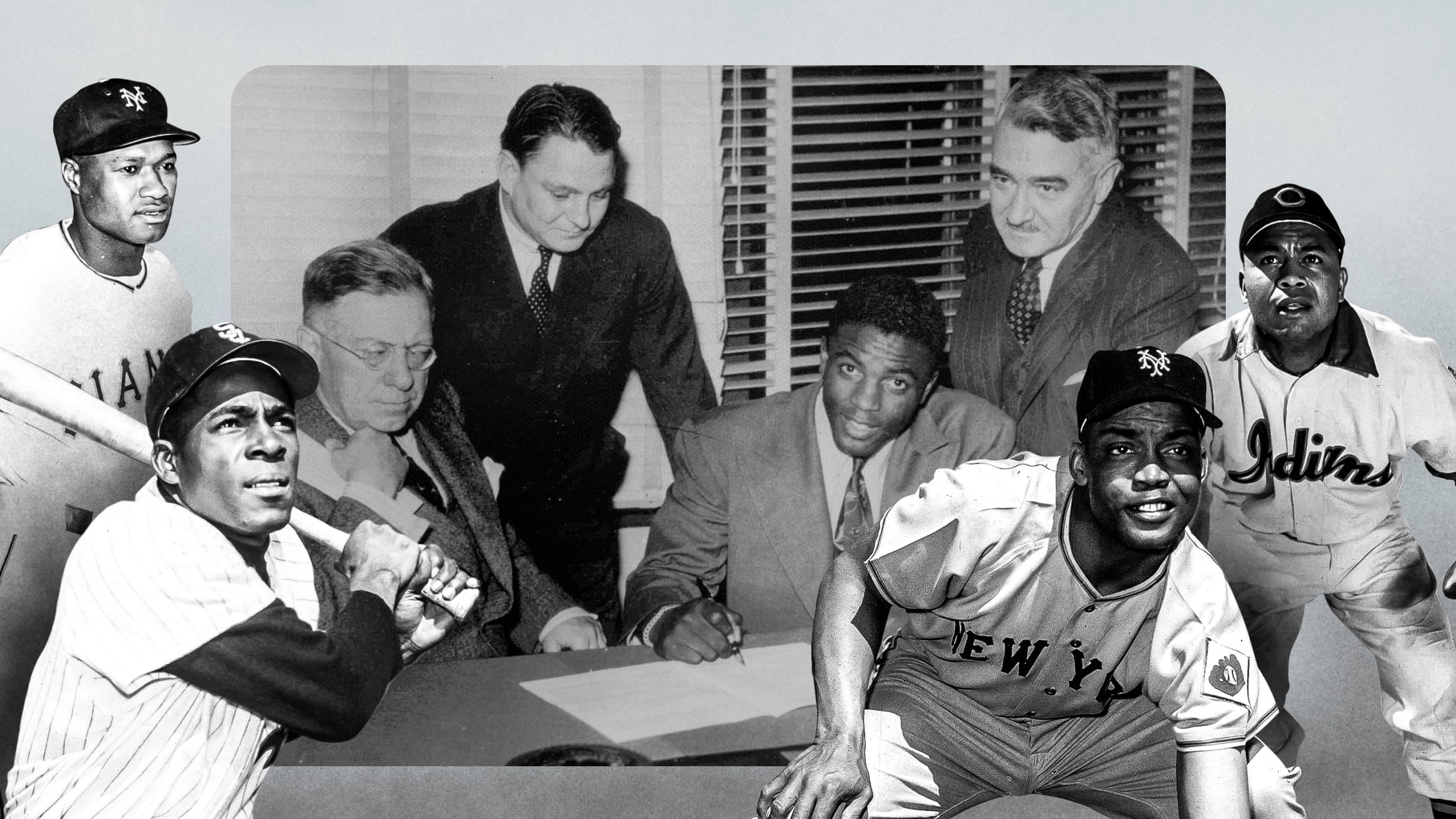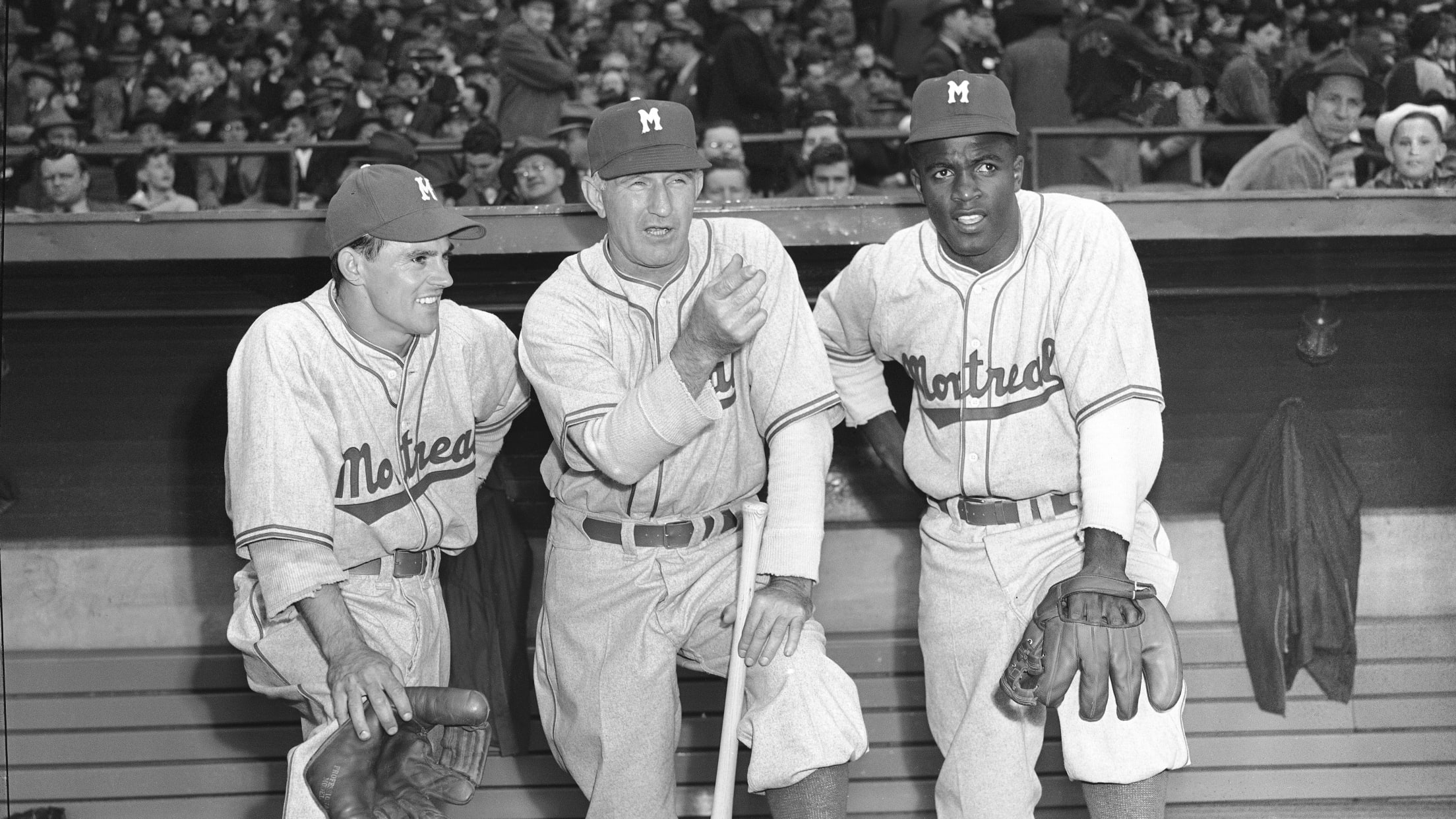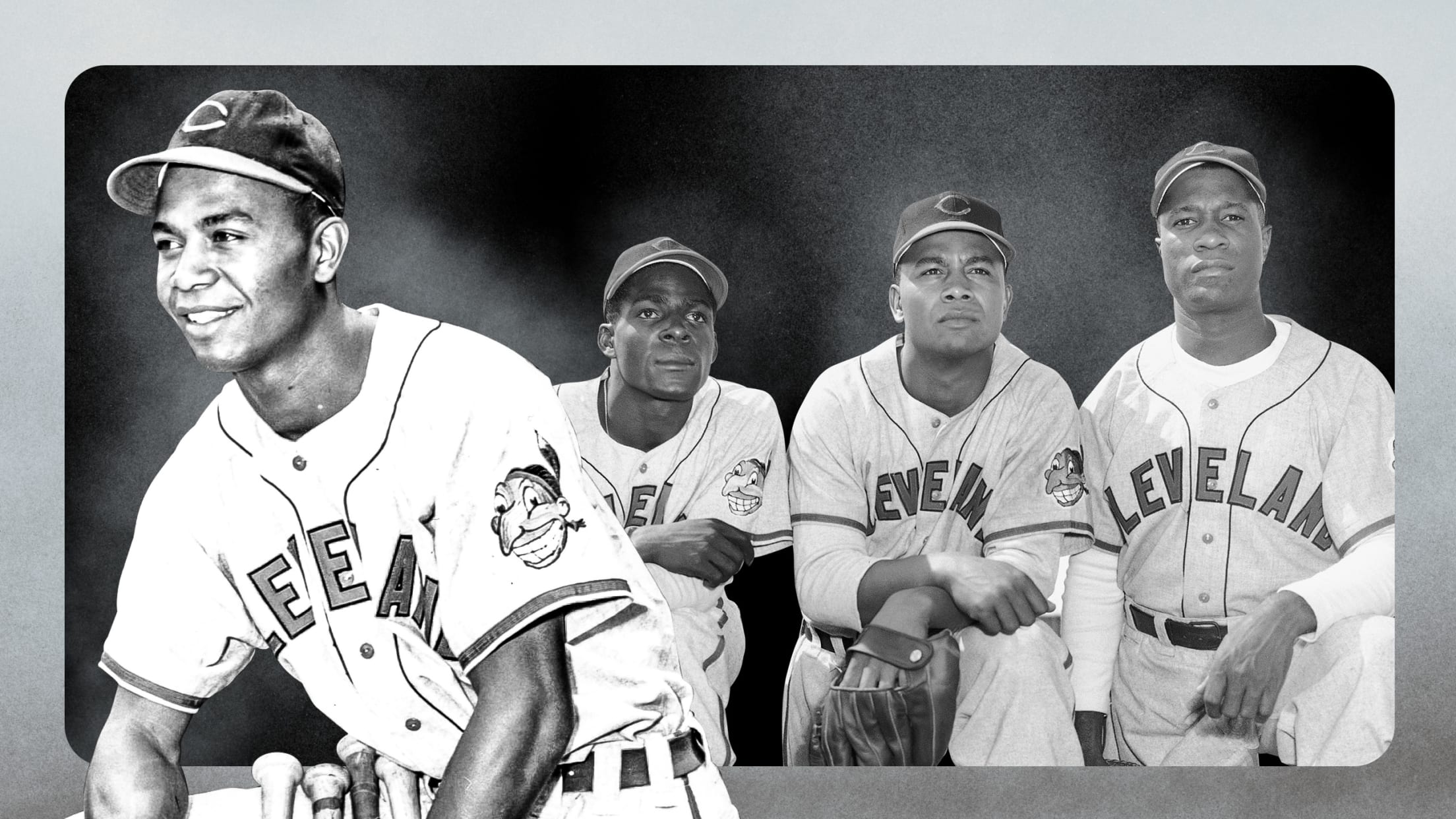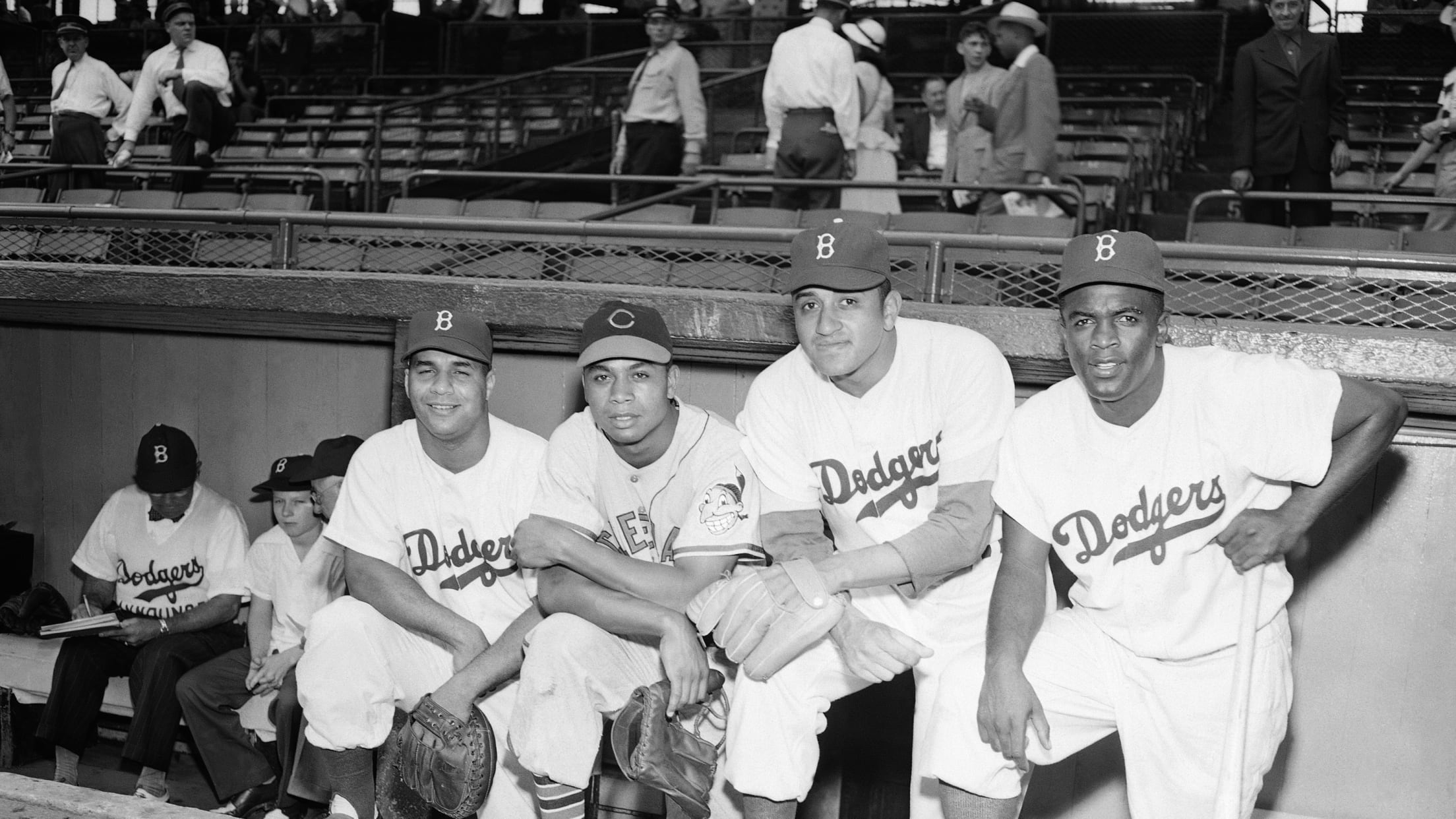
History of Black Baseball, Part IV
Raised in rural Ohio in a strict Methodist family, Branch Rickey, nicknamed by sportwriters “The Deacon” and “The Mahatma,” had financed his way through college and law school playing and coaching baseball. His skills as a catcher merited two years in the major leagues. In 1913, he abandoned a fledgling law career to manage the St. Louis Browns, and in 1917 he began a 25-year relationship with the St. Louis Cardinals. Rickey served as the field manager of the Cardinals from 1919-1925, after which he became the club’s vice-president and business manager. In the 1920s and 1930s, Rickey perfected the farm system, whereby a major league team controlled young, undeveloped players through a chain of minor league franchises. This innovation allowed the Cardinals to compete equally with richer teams in larger cities, generating pennants for the “Gas House Gang” and allowing the team to profitably sell off surplus talent.
• History of Black Baseball, Part I
• History of Black Baseball, Part II
• History of Black Baseball, Part III
Although Rickey later claimed that his desire to integrate baseball dated from 1904, when an Indiana hotel had denied lodgings to a Black player on his college squad, he gave no indication of any interest in the race issue during his years in St. Louis. Perhaps this stemmed from the fact that St. Louis was a Southern city with firmly entrenched segregationist traditions. Throughout Rickey’s reign with the Cardinals, Black fans sat in Jim Crow sections at Sportsman’s Park, a policy which he never openly challenged. Nonetheless, in 1942, when Rickey left the Cardinals and assumed control of the Brooklyn Dodgers, he informed the Dodger ownership of his intentions to recruit Black players in the near future.
Rickey never clearly explained the motivations for this dramatic turnaround. At times Rickey cited moral considerations, stating, “I couldn’t face my God much longer knowing that His Black creatures are held separate and distinct from His white creatures in the game that has given me all I own.” On other occasions, he eschewed the role of “crusader,” proclaiming, “My selfish objective is to win baseball games ... The Negroes will make us winners for years to come.” Some observers saw financial reasons behind Rickey’s actions, citing the lure of the growing Black population in Northern cities and the prospects of increased attendance. Certainly, Brooklyn offered a more congenial atmosphere for integration than St. Louis. In all probability, a combination of these factors — geographic, moral, competitive, and financial — coupled with Rickey’s desire for a broader role in history, impelled him to seek Black players.
From 1942-1945, Rickey, a conservative, cautious, and conspiratorial man, moved slowly, studying the philosophical and sociological ramifications of integration and taking few people into his confidence. During the spring and summer of 1945, under the guise of creating a new Black baseball circuit, the United States League, Rickey’s scouts combed the nation and the Caribbean for Black players. Rickey sought one player who would spearhead the breakthrough and several other potential stars who would follow in his wake. By August 1945, scouting reports and Rickey’s own investigations pointed to one man as the ideal candidate for the struggle ahead — Kansas City Monarch shortstop Jackie Robinson.

In Robinson, Rickey had found a rare combination of athletic ability, competitive fire, intelligence, maturity, and poise. Born in Georgia and raised in Pasadena, California, Robinson had won fame at UCLA as the nation’s greatest all-around athlete, earning All-America honors in football, establishing broad-jump records, and leading his basketball conference in scoring, all in addition to his baseball exploits. In 1942, he enlisted in the army where he attended officer’s candidate school and became a lieutenant.
Two years later, while stationed in Texas, Robinson’s refusal to move to the back of a bus resulted in a court martial and ultimate acquittal. This incident demonstrated his commitment to the cause of equal rights. After his discharge from the army, Robinson joined the Monarchs and earned a starting spot in the 1945 East-West All-Star Game. Robinson’s college education, experience in interracial athletics, and army career complemented his playing talents. But his fiery pride and temper seemed a potential obstacle to his success.
On August 28, 1945, Robinson met with Rickey at the latter’s Brooklyn offices. Rickey revealed his bold plan to integrate organized baseball and challenged Robinson to accept the primary role. The Mahatma flamboyantly play-acted, assuming the role of racist players, fans and hotel clerks, impressing upon Robinson the need to “turn the other cheek” in the event of racial confrontations. By the end of the session, Robinson had signed a contract to play for the Montreal Royals in the International League, the top farm team in the Brooklyn system. Rickey promised that if Robinson’s performance merited it, he would be promoted to the Dodgers.

Rickey intended to announce the Robinson signing along with that of several other Black players, but political pressures stemming from the New York City fall elections forced him to abandon his original plans and, on October 23, 1945, to reveal the signing of Robinson alone. The announcement sent shock waves through the baseball establishment and placed Robinson into a spotlight that he would never relinquish. Numerous sports figures, from players to executives to reporters, predicted the ultimate failure of Rickey’s “great experiment.”
Robinson’s first test came at spring training in Florida in 1946. Thrust into the deep South where Jim Crow reigned supreme, Robinson and black pitcher John Wright, whom Rickey had recruited to room with Robinson, found themselves unable to room with their teammates and barred from playing in Jacksonville and other Florida cities. In addition, a shoulder injury hindered Robinson’s performance, raising doubts about his abilities.
On April 18, 1946, at Roosevelt Stadium in Jersey City, Robinson became the first black to appear in modern Organized Baseball (excepting Jimmy Claxton, who passed as Native American in 1916 for the Oakland Oaks of the Pacific Coast League). In the process he staged one of the most remarkable performances under pressure in the history of the game. In Robinson’s second at-bat, he hit a three-run home run. He followed this with three singles and two stolen bases, scoring a total of four runs. As the New York Times reported, “This would have been a big day for any man, but under the circumstances it was a tremendous feat.”
In many respects, 1946 proved a nightmare season for Robinson. Fans jeered him in Baltimore, and opposing players tormented him with insults. Pitchers made him a frequent target of brushback pitches and baserunners attempted to spike and maim him at second base. As the season drew to a close, Robinson hovered on the brink of a nervous breakdown. Through it all, however, Robinson remained a dominant force on the field. His .349 batting average and 113 runs scored led the league and paced the Royals to the International League pennant. His presence inspired new attendance records throughout the circuit. In the Little World Series, which pitted Montreal against the Louisville Colonels of the American Association, Robinson braved the hostility of Kentucky fans and stroked game-winning hits in the final two games to give the Royals the championship.
This would have been a big day for any man, but under the circumstances it was a tremendous feat.
The New York Times on Jackie Robinson's debut in Jersey City
Rickey’s initiative and Robinson’s dramatic success failed to inspire other team owners. In August, major league executives debated a controversial report discussing the “Race Question” which argued that integration would “lessen the value of several Major League franchises.” No other clubs moved to sign Black players. Only four Blacks, all in the Brooklyn system, joined Robinson in organized baseball in 1946. At Nashua, New Hampshire, in the New England League, the Dodger farm club fielded catcher Roy Campanella and pitcher Don Newcombe. The Nashua Dodgers won the league championship largely due to Campanella’s hitting and Newcombe’s hurling. In the small town of Trois Rivieres in Quebec, pitchers John Wright and Roy Partlow, both of whom had appeared briefly with Robinson at Montreal, led a third Dodger farm team to the Canadian-American league crown. Nonetheless, at the start of the 1947 season, no additional Black players appeared on major or minor league rosters.
Although Robinson’s performance at Montreal merited promotion to the Dodgers, Robinson remained a Royal when he reported to spring training in 1947. Rickey hoped that the Brooklyn players themselves, when exposed to Robinson’s talents, would request his addition to the team. He switched Robinson to first base, a weak spot on the Dodger squad, to make his case more compelling. Robinson compiled a .519 batting average against the major leaguers, but several Dodger players, instead of demanding his promotion, rebelled. Led by “Dixie” Walker, a group of mostly Southern Dodgers circulated a petition against Robinson. Rickey moved quickly to short-circuit the dissension, threatening to trade any athletes who opposed Robinson. In addition, the refusal of Pete Reiser, “Pee Wee” Reese and other Dodger stars to support the protesters effectively squelched the petition drive. Finally, on April 10, just five days before the start of the 1947 season, Rickey officially announced that Robinson would join the Dodgers.
Throughout the early months of the 1947 campaign Robinson stoically endured crises and challenges. The Philadelphia Phillies, led by manager Ben Chapman, unleashed a barrage of verbal abuse against Robinson which horrified Dodger players and fans. The Benjamin Franklin Hotel in Philadelphia refused lodgings for Robinson and death threats appeared among his voluminous daily mail. In early May, rumors that the St. Louis Cardinals planned to strike rather than compete against Robinson prompted National League President Ford Frick to warn the players, “If you do this you will be suspended from the league.” Opposing pitchers targeted Robinson’s body at a record-setting pace and an early season 0-for-20 batting drought led many to question his qualifications. “But for the fact that he is the first acknowledged Negro in major league history,” observed a Cincinnati sportswriter, “he would have been benched a week ago.”
Yet, as the season unfolded, Robinson converted doubters and enemies into admirers. By the end of June, a 21-game hitting streak had raised his batting average to .315 and propelled the Dodgers into first place. Robinson’s daring baserunning, typical of Negro League play, evoked images of an “Ebony Ty Cobb.” In city after city, record crowds flocked to experience Robinson’s charismatic dynamism as five teams set new all-time season attendance marks.
While periodic controversies erupted over baserunners who used their spikes “to make a pincushion out of Robinson” at first base, Robinson won the acceptance and respect of teammates and opponents alike. In September, as the Dodgers coasted to the pennant, the Sporting News named Robinson the major league Rookie of the Year. To cap his triumphant season, Robinson became the first Black player to appear in the World Series.
Robinson’s success on the field and at the box office stimulated some movement on the part of other clubs to hire Black players. In Cleveland Bill Veeck recruited 23-year-old Larry Doby, who jumped straight from the Negro League Newark Eagles to the Indians in July. Used sparingly, Doby batted a meager .156, casting doubts upon his future. The St. Louis Browns, seeking to boost flagging attendance, signed Willard Brown and Hank Thompson of the Kansas City Monarchs. When the turnstiles failed to respond, the Browns released both Brown and Thompson, although the latter had established himself as a top prospect. In the National League, the Dodgers signed Dan Bankhead to bolster the club’s pitching down the stretch. On August 25, Bankhead, the first Black pitcher to appear in the major leagues, surrendered eight runs in three innings but also slammed a home run in his initial at bat.
In addition to the five athletes who appeared in the major leagues, a handful of Black players surfaced in the minors. Campanella succeeded Robinson at Montreal, earning accolades as “the best catcher in the business.” Newcombe returned to Nashua where he won 19 games. The independent Stamford Bombers of the Colonial League fielded six Black players, and two Black ballplayers, including future major leaguer Chuck Harmon, played in the Canadian-American League. Veteran Negro League hurler Nate Moreland won 20 games in California’s Class C Sunset League. For the most part, however, organized baseball continued to ignore the treasure trove of Black talent submerged in the Negro Leagues. A full year would pass before additional major league teams would add Black players to their chains.

In 1948, the integration focus shifted from the Dodgers, where Robinson now reigned at second base, to the Cleveland Indians. In spring training, Larry Doby, who had performed so dismally in 1947, unexpectedly won a starting berth in the Cleveland outfield. After an erratic early season stretch in which Doby alternated errors and strikeouts with tape-measure home runs, he batted .301 and became a key performer for the American League champion Indians. In July, Cleveland owner Bill Veeck added the legendary Satchel Paige to the team. Amidst charges that his signing had been a publicity stunt, the 42-year-old Paige won six out of seven decisions, including back-to-back shutouts, and posted a 2.47 earned run average. Standing-room-only crowds greeted him in Washington, Chicago, Boston, and even in Cleveland’s mammoth Municipal Stadium. The Indians, after defeating the Boston Red Sox in a pennant playoff, won the World Series in six games with Doby’s .318 average leading the club.
In 1947, the Dodgers had integrated and reached the World Series; in 1948, the Indians had duplicated and surpassed this achievement. Both teams had set all-time attendance records. Remarkably, as the 1948 season drew to a close, no other franchise had followed their lead. In the minor leagues, Roy Campanella became the first Black player in the American Association, stopping at St. Paul before permanently joining Robinson on the Dodgers. Newcombe and Bankhead each won more than 20 games for Brooklyn affiliates. The Dodgers also added fleet-footed Sam Jethroe to the Montreal roster, where he batted .322. The Indians also began to stockpile Black talent, signing future major leaguers Al Smith, Dave Hoskins, and Orestes “Minnie” Miñoso to minor league contracts. Several other Blacks, including San Diego catcher John Ritchey, who broke the Pacific Coast League color line, played for independent teams.
In the interregnum between the 1948 and 1949 seasons four more teams -- the Giants, Yankees, Braves, and Cubs -- signed Black players to play in their farm systems, and 1949 would herald the beginning of widespread integration in the Minor Leagues. Black players starred in all three Triple-A leagues. In the Pacific Coast League, Luke Easter won acclaim as the “greatest natural hitter . . . since Ted Williams,” amassing 25 home runs and 92 runs batted in in just 80 games before succumbing to a knee injury. Oakland’s Artie Wilson led the league in hits, stolen bases, and batting average. In the International League, Jethroe scored 151 runs and stole 89 bases while Montreal teammate Dan Bankhead won 20 games for the second straight year. At Jersey City, Monte Irvin batted .373. The outstanding performer in the American Association was Ray Dandridge. Considered by many the greatest third baseman of all time, the acrobatic Dandridge, now in his late 30s, thrilled Minneapolis fans with his spectacular fielding, batting .364 in the process. Former Negro Leaguers turned in equally stellar performances at lower minor league levels as well.
In the Major Leagues, the spotlight again returned to Jackie Robinson. For three years, Robinson had honored his pledge to Branch Rickey “to turn the other cheek” and avoid confrontations. With his position in the majors firmly established, Robinson announced, “They better be prepared to be rough this year, because I’m going to be rough on them.” The more combative Robinson produced his finest year, batting .342 and earning the National League Most Valuable Player Award. Complemented by teammates Newcombe and Campanella, Robinson led the Dodgers to another pennant.

By the end of the 1949 season, integration had achieved spectacular success at both the major and minor league level, but most teams moved “with all deliberate speed” in signing Black players. The New York Giants joined the interracial ranks in 1949 when they promoted Monte Irvin and Hank Thompson. The following year, the Boston Braves purchased Jethroe from the Dodgers for $100,000 and installed him in the starting lineup. In 1951, the Chicago White Sox acquired Minnie Minoso in a trade with Cleveland, and Bill Veeck, who had acquired the hapless St. Louis Browns, brought back Satchel Paige for another major league stint. Yet, as late as August 1953, out of sixteen Major League teams only these six fielded Black players. Several teams displayed an interest in signing Black players but bypassed established Negro League stars who might have jumped directly to the majors, concentrating instead on younger prospects for the minor leagues. Still others like the Red Sox, Phillies, Cardinals, and Tigers continued to pursue a whites-only policy.
This failure to hire and promote Black players occurred amidst a continuing backdrop of outstanding performances. The first generation of players from the Negro Leagues proved an extraordinary group. Jackie Robinson quickly established himself as one of the dominant stars in the national pastime, compiling a .311 batting average over his 10-year career while thrilling fans with his baserunning and clutch-hitting talents. Sportswriters called him “the most dangerous man in baseball today.” Campanella won accolades as the best catcher in the National League and won the NL Most Valuable Player Award in 1951, 1953, and 1955. Both Campanella and Robinson later won election to the Baseball Hall of Fame. Pitcher Don Newcombe averaged better than 20 wins a season during his first five full years with the Dodgers. In addition, from 1950-1953 Negro League graduates Sam Jethroe, Willie Mays, Joe Black, and Jim Gilliam each won the National League Rookie of the Year Award.
In the American League, where integration proceeded at a slower pace, several players compiled outstanding records. Larry Doby, while never achieving the superstar status many expected, nonetheless became a steady producer, twice leading the league in home runs and five times driving in more than 100 runs. His Cleveland teammate Luke Easter, who reached the majors in his mid-30s, slugged 86 home runs and drove in 300 runs in his brief three-season career. Satchel Paige, after a two-year stint with the Indians, joined the hapless St. Louis Browns from 1951-1953 and became one of the American League’s best relief pitchers. On the Chicago White Sox, Minnie Miñoso proved himself a consistent .300 hitter. Despite their relatively small numbers, teams with Black players in both Major Leagues regularly finished high in the standings and only in 1950 did both pennant winners field all-white squads. In addition, the more aggressive stance of National League teams in recruiting Black players gave that circuit a clear superiority in World Series and All-Star contests for more than two decades.
By the end of the 1953 season, the benefits of integration had grown apparent to all but the most recalcitrant of Major League owners. In September, the Chicago Cubs purchased shortstop Ernie Banks from the Kansas City Monarchs and finally elevated longtime minor league standout Gene Baker. Connie Mack’s Philadelphia Athletics ended their Jim Crow era by acquiring pitcher Bob Trice. At the start of the 1954 season, the Washington Senators, St. Louis Cardinals, Pittsburgh Pirates, and Cincinnati Reds all joined the interracial ranks. The sudden integration of six more clubs left only the Yankees, Tigers, Phillies, and Red Sox with all-white personnel. In addition, 1954 marked the debut of young Henry Aaron with the Braves and the return of Willie Mays, who had sparkled for the Giants in 1951, from military service.